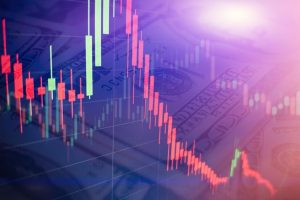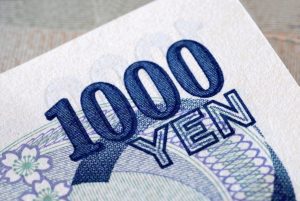DOLLAR FALLS AS FED SIGNALS LIKELY SEPTEMBER RATE CUT
The dollar added to losses on Wednesday after the Federal Reserve held interest rates steady but opened the door to reducing borrowing costs as soon as its next meeting in September. Fed Chair Jerome Powell said in comments after the statement from its two-day meeting that an interest rate cut could be on the table as early as September if inflation moves down in line with expectations, growth remains reasonably strong and the labor market remains as it is. But he also said that the U.S. central bank remains data dependent and has not made any decisions about future meetings. “The Fed wants to let the data play out a little bit longer, even at the risk of falling behind the curve,” said Adam Button, chief currency analyst at ForexLive in Toronto. Traders have fully priced in a September rate cut, which may take pressure of the Fed to signal a certain move then. “Everyone in the market knows it’s priced in, the Fed knows it’s priced in, so really not pushing back against that is a kind of implicit endorsement of market pricing,” said Button. Traders are also expecting a second and possible third cut by year-end. FEDWATCH The dollar index =USD fell as low as 103.92 and was last down 0.34% at 104.09. It is on track for a monthly loss of 1.7%. The next major U.S. economic release that is likely to drive Fed policy will be Friday’s government jobs report for July. It is expected to show that employers added 175,000 jobs during the month, according to the median estimate of economists polled by Reuters.

POUND FIRM VERSUS DOLLAR AHEAD OF BOE BUT SLIDES AGAINST YEN
The pound held steady versus the dollar on Wednesday but headed for its biggest one-day drop against the yen in nearly three months after the Bank of Japan (BOJ) raised interest rates in an unexpectedly hawkish move.Investors were mainly focused on the Bank of England’s interest rate decision on Thursday, with greater uncertainty than usual as policymakers have not spoken publicly for more than two months due to rules in the run-up to July 4’s election.The pound GBP=D3 was trading steadily, at $1.2832 and was on course for a 1.5% monthly gain against the dollar. Sterling options volatility, meanwhile, exploded to its highest in almost a year, reflecting the degree of trader nervousness ahead of the decision. Bank of America strategists called the decision “super close”, but said they believed the central bank would cut rates by 25 basis points. “The question is: has the data since June changed the minds of the dovish members, who were close to cutting in June, enough. The lack of BoE-speak makes it difficult to gauge, but we suspect, for the dovish members, it doesn’t,” they said. Implied overnight options volatility – a measure of demand for protection from big near-term price swings – hit 12.13%, the most since August last year and marking its biggest one-day rise since last June, according to LSEG data GBPONO=R. Market pricing around the outcome of the BoE meeting has swung wildly in the past few days, and by Wednesday morning was showing around a 63% chance of a cut 0#BOEWATCH.

DOLLAR GAINS ON GEOPOLITICAL TENSIONS, POUND SLIPS AFTER RATE CUT
The dollar gained on Thursday as rising geopolitical tensions drovea safe-havenboost, while the British pound fell after the Bank of England cut interest rates from a 16-year high.Concerns about a widening conflict in the Middle East intensified after Hamas leader Ismail Haniyeh was assassinated in the Iranian capital, Tehran, on Wednesday morning, drawingthreats of revenge on Israel. “We are looking at the threat of outright conflict breaking out in the Middle East,” said Karl Schamotta, chief market strategist at Corpay in Toronto. “That is supporting the dollar’s safe-havenappeal.”The dollar also bounced as a selloff on Wednesday following dovish comments by Federal Reserve Chair Jerome Powell at the conclusion of the U.S. central bank’s two-day meeting was seen as possibly overdone. “Although Jerome Powell was extremely dovish in the press conference, the statement released by the Federal Open Market Committee really sounded more balanced,” said Schamotta. Powell said that interest rates could be cut as soon as September if the U.S. economy follows its expected path. TheFed’s policy statement on Wednesday cited”some further progress toward the (Federal Open Market) Committee’s 2% objective,” while noting that theunemployment rate, at 4.1%, “remains low.” Traders are now fully pricing in three 25-basis-point rate cuts by year-end, indicating one cut at each of the Fed’s September, November and December meetings. FEDWATCH The next major U.S. economic release that is likely to drive Fed policy will be Friday’s jobs report for July.
STERLING STEADIES AFTER BOE-DRIVEN SLIDE, EYES ON US PAYROLLS
The pound steadied on Friday after suffering sharp losses a day earlier when the Bank of England (BoE) cut interest rates for the first time in more than four years. Sterling GBP=D3 was nearly flat at $1.2739, after having hit a fresh one-month low at $1.2708 earlier in the session, and was on track to post its biggest weekly decline in nearly four months, down 1%. The BoE cut rates on Thursday by a quarter-point to 5% in a tight vote by its policymakers, underscoring the extent to which inflation risks are still hanging over the economy. Governor Andrew Bailey stressed the central bank was not committing to a series of quick rate cuts, saying the stronger performance of the economy in recent months could keep inflation risks on the radar. However, the pound continued to weaken against the euro EURGBP=D3, touching an eight-week low of 84.995 pence at one point on Friday. Euro/sterling was last up 0.27% at 84.915 pence. “Looking ahead, we see scope for the UK policy rate to be cut more than that in the euro zone and look for euro/sterling to turn slowly higher,” ING analysts said. “We have been too bullish on euro/sterling this year, but still favour levels above 85 later this year.” Investors are fully pricing one further cut to interest rates by the BoE later this year. Meanwhile, the dollar eased against other major currencies =USD ahead of U.S. payrolls data that is expected to show U.S. employment increased at a slower, but still healthy, pace in July. A wave of selling hit stock markets on Thursday and Friday, while safe-haven currencies and bonds rose after data showing a surprise slump in U.S. manufacturing ignited worries about a downturn.

DOLLAR HITS FOUR-MONTH LOW AS WEAK US JOBS DATA BOOSTS RATE CUT BETS
The U.S. dollar dropped to a four-month low on Friday after a weaker-than-expected employment report for July raised expectations that the Federal Reserve will cut interest rates by 50 basis points in September as the economy sours. Employers added 114,000 jobs, below expectations for an increase of 175,000. The unemployment rate rose to 4.3 per cent, above economists expectations that it would be unchanged on the month at 4.1 per cent. Traders are now pricing in a 71 per cent probability that the Fed will cut rates by 50 basis points in September, up from 31 per cent before the data was released and from 22 per cent on Thursday, according to the CME Group’s FedWatch Tool. A cut of at least 25 basis points is fully priced in for September and 116 basis points of easing is now expected by year-end. “This is what a growth scare looks like. The market is now realizing that the economy is indeed slowing,” said Wasif Latif, president and chief investment officer at Sarmaya Partners in Princeton, New Jersey. The dollar index was last down 1.1 per cent at 103.21 and got as low as 103.12, the lowest since March 14. It is the largest one-day percentage drop since November. Treasury yields also tumbled, with interest rate sensitive two-year yields dropping as low as 3.845 per cent, the lowest since May 2023, and benchmark 10-year yields reaching a low of 3.79 per cent for the first time since Dec. 27. The U.S. Labor Department said that Hurricane Beryl, which made landfall in Texas on July 8, had “no discernible effect” on the jobs data, discounting one theory that may have explained the weakness.
- CAPITALDIGEST MARKET REVIEW , 03/11/2025November 3, 2025
- CAPITALDIGEST DAILY NEWS, 03/11/2025November 3, 2025
- CAPITALDIGEST MARKET REVIEW, 22/09/2025September 22, 2025
Enter your email address for receiving valuable newsletters.
- CAPITALDIGEST DAILY NEWS, 03/11/2025NNPCL WEIGHS OVERHAUL, REPURPOSING OPTIONS FOR REFINERIES The Nigerian National Petroleum Company Limited has said...November 3, 2025
- CAPITALDIGEST MARKET REVIEW, 22/09/2025STERLING RISES AGAINST DOLLAR ON FED-BOE POLICY DIVERGENCE Sterling gained against the dollar on Tuesday,...September 22, 2025
- CAPITALDIGEST DAILY NEWS, 22/09/2025OIL REFORMS DRIVE $18.2BN DEALS – FG Nigeria’s oil and gas sector is experiencing a...September 22, 2025












